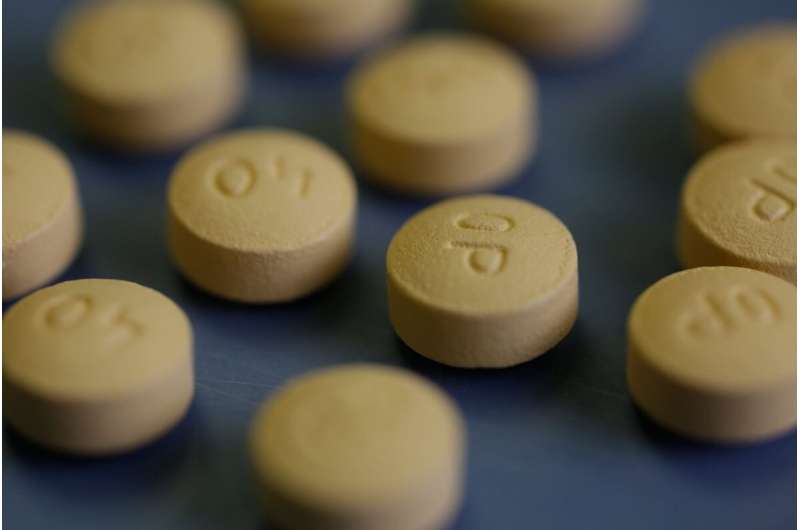This article has been reviewed according to Science X's editorial process and policies. Editors have highlighted the following attributes while ensuring the content's credibility:
fact-checked
trusted source
proofread
Researchers look at opioid use disorder treatment through eyes of patients

Patients would be more willing to enter medication-assisted treatment for opioid use disorder if existing stigmas were reduced and more accessible payment support was readily available, a West Virginia University study finds.
Adam Baus, director of the Office of Health Services Research, and his team gained insight from patients on what helped or hindered medication-assisted treatment, or MAT, to support recovery.
"Little research attention has been given to learning directly from those in medication-assisted treatment for opioid use disorder," said Baus, also a research assistant professor with the WVU School of Public Health Department of Social and Behavioral Sciences. "We set out to help make sure the voices of those in recovery are heard so we can learn from them and strengthen a system of care for OUD."
The study published in the Journal of Appalachian Health shows the MAT system of care can be strengthened through acknowledging the importance of personal readiness to enter treatment, reducing stigma of the program and improving access to available resources such as payment support. More than 200 West Virginia residents who have experienced opioid use disorder and have previously participated or are currently enrolled in MAT took part in the study.
Researchers offered five recommendations to improve access and retention in MAT programs:
- Strengthening a system of care for OUD through acknowledging the importance of personal readiness to enter treatment.
- Removing structural barriers to care, such as financial costs to enter treatment, access to medications and assistance with transportation to appointments.
- Providing proactive outreach and communication about potential Medicaid eligibility that would cover the cost of MAT and provide transportation support to people who might be ready to seek treatment.
- Individualizing care plans by ensuring treatment is delivered respectfully while supporting the agency of those in recovery and addressing social, environmental and other factors supportive of recovery.
- Reducing stigma surrounding MAT by recognizing OUD as a chronic disorder similar to other chronic disorders such as diabetes, using non-stigmatizing language, understanding reasons for use of non-prescribed Suboxone and recognizing the value of individualized treatment.
MAT combines buprenorphine, methadone or naltrexone—all cleared by the Food and Drug Administration for treatment of opioid dependence—with counseling and behavioral therapy.
The treatment has been proven effective in decreasing mortality, increasing retention in treatment, decreasing illicit opiate use and criminal activity, supporting employment and improving birth outcomes among pregnant women with opioid use disorder. However, only 28% of those needing MAT receive it, and there is a gap of four to seven years on average between the onset of opioid use disorder and the start of treatment.
In rural areas, MAT is not readily available due to a lack of prescribers, long wait times to get into programs, social stigma, cost, transportation, negative prior treatment experiences, peer pressure to continue using and lack of knowledge about where to receive treatment. Although retention in MAT is also challenging, those who remain in treatment longer than a year tend to have better outcomes.
"The 225 individuals who took the time and energy to be part of this study provided rich history and context into their experiences, with detailed responses to open-ended questions," Baus said. "They told us that addiction is not a short-term problem and that barriers to treatment and recovery are long-standing."
Participants ranged in age from 18 to older than 55. The majority were covered for MAT services by Medicaid or Medicare, while a few paid full costs out of pocket or via a sliding scale. Almost all the participants were currently enrolled in a MAT program and about half of them reported using drugs for 11 years or more. Whether receiving a wake-up call from an overdose or simply becoming tired of drugs taking control, all said they were seeking a program that could put them on a path to a better life.
More information: Adam Baus et al, A Better Life: Factors that Help and Hinder Entry and Retention in MAT from the Perspective of People in Recovery, Journal of Appalachian Health (2023). DOI: 10.13023/jah.0501.06




















